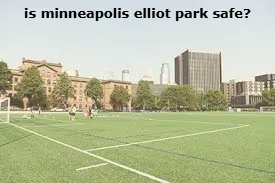Is Minneapolis Safe?

Minneapolis is a vibrant city, but its safety profile varies by neighborhood. Some areas have high crime rates, while others are safer than average.
It is important to understand these differences when assessing Minneapolis’ safety. This article will discuss a variety of factors that influence safety, including public transportation, community engagement, and police presence.
is uptown minneapolis safe
Uptown Minneapolis is a young, vibrant neighborhood that is home to a lively blend of global cuisine, local retail, and active nightlife. The area is known for its youthful energy and is a favorite spot for rooftop brunch. It is also known for its proximity to the city’s green spaces and lakes.
However, Uptown Minneapolis is not without its problems. Recent crime spikes have left many residents feeling unsafe. Police have stepped up patrols in the area to combat the problem. Neighbors are also organizing safety walks and registering their security cameras.
Other areas to avoid in Minneapolis include Midtown Phillips and Sumner Glenwood. These neighborhoods have high crime rates, which are 337% above the national average. There have been a number of violent and property crimes in these neighborhoods. However, it is important to remember that most of these incidents are avoidable by exercising common sense and being vigilant.
is northeast minneapolis safe
If you’re thinking about moving to Minneapolis, there are a few things to keep in mind. First, it’s important to understand the city’s crime rates. Although Minneapolis is considered safer than 99 percent of the country’s cities, it still has some dangerous neighborhoods.
The North Side of the city has a higher crime rate than other areas. This includes neighborhoods like Jordan, Willard-Hay, Sumner Glenwood, and Folwell. These neighborhoods have a high number of violent and property crimes.
However, Kelling warns that the crime maps may be misleading. The data is compiled from Minneapolis police crime reports, which are available on the city’s website for free. These crime reports include everything from theft to homicides, but the data is aggregated to hide the identities of crime victims. This makes the data less accurate. The city also relies on private companies to gather this data, which may lead to inaccurate information.
is minneapolis tap water safe to drink
The city that literally means “city of water” is famous for its flour mills, the headquarters of Target and 3M, and cultural contributions like Prince and Snoopy. However, the city also faces challenges when it comes to its drinking water.
The water that Minneapolis residents drink comes from both groundwater and surface water. Groundwater is stored in aquifers beneath the earth’s surface and supplies 75% of Minnesota’s drinking water. Surface water includes lakes, rivers, and streams. The quality of drinking water in Minneapolis depends on the cleanliness of the source and the treatment process.
The City of Minneapolis tests its drinking water regularly and publishes the results in Annual Drinking Water Reports. These reports show which contaminants are detected and their levels. Many of the contaminants do not pose a health risk to humans. Others, such as Chlorine and Ammonia (Chloramines) and chromium, are found in some water sources because of their use as disinfectants.
is south minneapolis safe
It is important to note that crime rates vary greatly from one neighborhood to the next, and a blanket statement about South Minneapolis’ safety would be inaccurate. Consequently, this in-depth guide explores the safety of various South Minneapolis neighborhoods by combining crime statistics and resident perspectives.
For example, in the Powderhorn Park area, a community group called 21 Days of Peace has worked with residents to reduce gang violence. The program places ambassadors on the streets to ensure that residents feel safe and to inform them of available social services.
Nonetheless, some areas of south Minneapolis still have higher crime rates than others. For example, the area near Franklin and Chicago Avenues has become known as a hotspot for gang activity, and there have been several recent homicides in the vicinity. Despite this, many residents remain positive about their experiences in the area and continue to work with local officials to improve conditions.
is elliot park minneapolis safe

In general, Elliot Park has low crime rates, comparable to other neighborhoods in the city. Property crimes such as theft are more common than violent crimes, reflecting a trend across many urban areas. However, residents should always exercise caution when walking at night and should stick to well-lit streets.
In addition to local police forces, the community has a variety of safety initiatives. For example, local businesses host regular neighborhood meetings to share concerns and provide updates on crime statistics. Online forums like Nextdoor also reveal the opinions of neighbors, though these may not be representative of the whole community.
Interestingly, the Elliot Park / North Central University neighborhood is unique linguistically. In fact, 7.4% of its residents over five years old speak African languages at home. This is higher than the average for 99.4% of American neighborhoods. This might be due to a high concentration of Somali families in the area.
is downtown minneapolis safe
Many University of Minnesota students live within sight of one of the largest urban centers in America, yet they often avoid downtown Minneapolis altogether. Whether out of fear of crime or a lack of familiarity, these young adults miss out on the unique social and cultural experiences this urban core has to offer.
To counteract these misconceptions, Mpls DID and community partners are working hard to ensure that downtown is safe for everyone, particularly young people. From increased police presence to youth-focused street outreach, the city is committed to improving downtown’s safety climate.
As with any major city, some areas of downtown experience higher crime rates than others. Keeping up to date on local news and consulting police blotters can help travelers make informed decisions about personal safety in downtown Minneapolis. Sticking to well-lit and populated areas, traveling in groups, and using ride-sharing services can significantly reduce risk.
